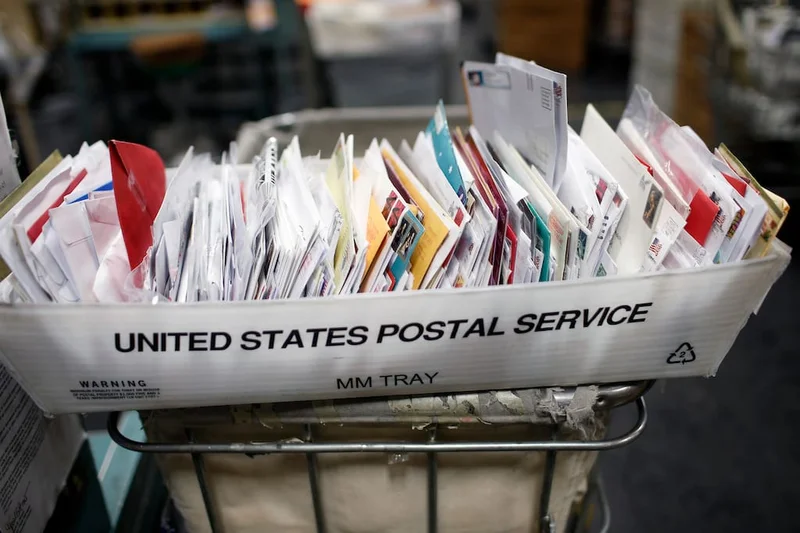Generated Title: USPS's $9 Billion Black Hole: Is a Price Hike the Answer, or Just a Bandaid?
The United States Postal Service just announced another year in the red, racking up a $9 billion net loss. That's only marginally better than last year’s $9.5 billion. Postmaster General David Steiner is calling for “new revenue opportunities and public policy changes." But is that what they really need? Or is this just rearranging deck chairs on the Titanic?
The Numbers Game: Revenue Up, Deficit...Still There
Let’s break down the financials. Total operating revenue did increase, by $916 million (or 1.2%) to reach $80.5 billion. This was supposedly driven by the growth of USPS Ground Advantage and "strategic price increases." But here's the kicker: even with those increases, they still lost $9 billion. A discrepancy, to say the least.
First-Class Mail revenue saw a bump of $370 million (up 1.5%), but that came at the cost of a 5% drop in volume—that’s 2.2 billion fewer pieces of mail. Marketing Mail revenue also increased, $350 million (up 2.3%), while volume declined by 1.3% (764 million pieces). Shipping and Packages revenue also increased, by $315 million (up 1.0%) despite a volume decline of 5.7% (415 million pieces). So, price hikes are masking a deeper problem: people are simply using the mail less.
The USPS is trying to spin this as strategic, but I'm not buying it. It's a classic case of diminishing returns. How many times can they raise prices before people just switch to FedEx or UPS, or, you know, email?
The Cost Conundrum: Where's the Money Going?
Operating expenses totaled nearly $89.8 billion, a $317 million increase (0.4%) from the prior year. The USPS attributes this to increased compensation costs and other operating costs, including a voluntary early retirement program. They also claim lower transportation costs and the impact of discount rates on workers’ compensation costs partially offset the increase.
And this is the part of the report that I find genuinely puzzling. How can you cut 10,000 positions through voluntary retirement (as they did this year) and still have compensation costs go up by $1.7 billion? Either those buyouts were incredibly generous, or there are some serious inefficiencies in how they're managing their workforce.

The USPS is also pushing for reforms to retiree pension benefit funding rules, diversification of pension assets, raising the statutory debt ceiling, and workers’ compensation administration reform. These are all classic moves to shift the burden elsewhere. It's not about fixing the underlying problems; it's about finding someone else to foot the bill.
Former Postmaster General Louis DeJoy, who resigned in March under pressure, claimed to have halved projected 10-year losses from $160 billion to $80 billion. But even that number is still astronomical. And let's not forget Trump's idea to merge the USPS with the Commerce Department, which Democrats rightly called a violation of federal law.
I've looked at hundreds of these filings, and the constant shifting of blame and the reliance on short-term fixes is a recurring theme. The core issue is that the USPS is trying to operate a 20th-century business model in a 21st-century world. They're delivering fewer letters and packages, and their costs are spiraling out of control. Raising prices is a short-term fix. What they need is a fundamental rethinking of their entire operation.
Smoke and Mirrors Accounting
The USPS is talking about "growing our USPS Ground Advantage package business" and "creating additional operational efficiencies." But those are just buzzwords. They need to show how they're going to do that. They need to provide concrete, data-driven plans, not just vague promises.
Here's my take: The USPS is a crucial part of the American infrastructure. It connects rural communities, delivers essential services, and employs a massive workforce (635,000 people, to be exact). But it's also a dinosaur. It's weighed down by outdated regulations, bloated bureaucracy, and a business model that simply doesn't work anymore. Raising prices might keep it afloat for a little while longer, but it's not a long-term solution. It's like giving a patient with a chronic illness a painkiller instead of treating the underlying disease. It masks the symptoms, but it doesn't cure the problem.
